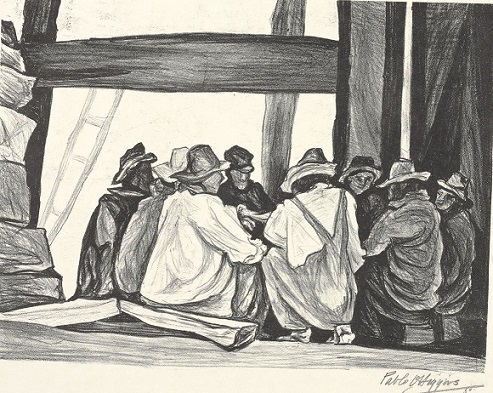Dublin Core
Title
Description
The Mexican Mural Renaissance is one of the most famous art movements in modern history. Learn how a blond-haired, blued-eyed, 20-year-old from Salt Lake City became a Mexican Muralist.
In 1924, Utah judge Edward Higgins put his twenty-year-old son, Paul, on a train to Mexico City. Paul had in his pocket a letter from Diego Rivera – the legendary Mexican muralist – inviting him to see the explosion of color appearing on the walls of Mexico that celebrated the end of the Mexican Revolution.
Paul had grown up in a conservative family in Salt Lake City. He developed a passion for art and music, excelling at the piano and studying art at East High under LeConte Stewart. Paul’s other passion was for the Mexican people. As a boy, he spent time on his family’s ranch near San Diego, where he played with the children of Mexican ranch-hands and learned Spanish.
When Paul got off the train in Mexico City, he joined the crowds who were watching Diego Rivera paint. Eventually, Rivera asked him to be his assistant, and Paul worked for the next five years alongside the artist on some of his most famous murals. Paul soon became “Pablo O’Higgins” and was a student of Rivera’s art and his politics. For the next fifty years, Pablo created art that celebrated the values of the Mexican Revolution – workers’ rights, free secular education for all, and the return of lands to Mexico’s peasant farmers.
During WWII, Pablo was acknowledged by the U.S. ambassador to Mexico as an effective emissary between his two countries, and Pablo traveled freely between them, teaching art and painting murals for unions in Seattle and Honolulu. But in the early 1950s – at the height of the Cold War – his politics landed him on a U.S. government blacklist. Pablo did not return to the States until 1975, when he came to restore a mural at the University of Washington. Upon arrival, however, Pablo and his Mexican wife, Maria, were detained by immigration officials because she had once visited Cuba. Incensed, Pablo vowed never to return to the United States. Four years later, he died in Mexico City.
Today, Pablo O’Higgins is recognized worldwide as a Mexican muralist – and a national treasure.
Creator
Susan Vogel for Utah Humanities © 2017
Source
Image: Pablo O'Higgins, Workers Eating (Obreros comiendo), 1950, Lithograph purchased from the Inter-American Fund, 136.1954, collection of the New York Museum of Modern Art.
_______________
See Susan Vogel, Becoming Pablo O’Higgins, San Francisco: Pince-Nez Press, 2010.

